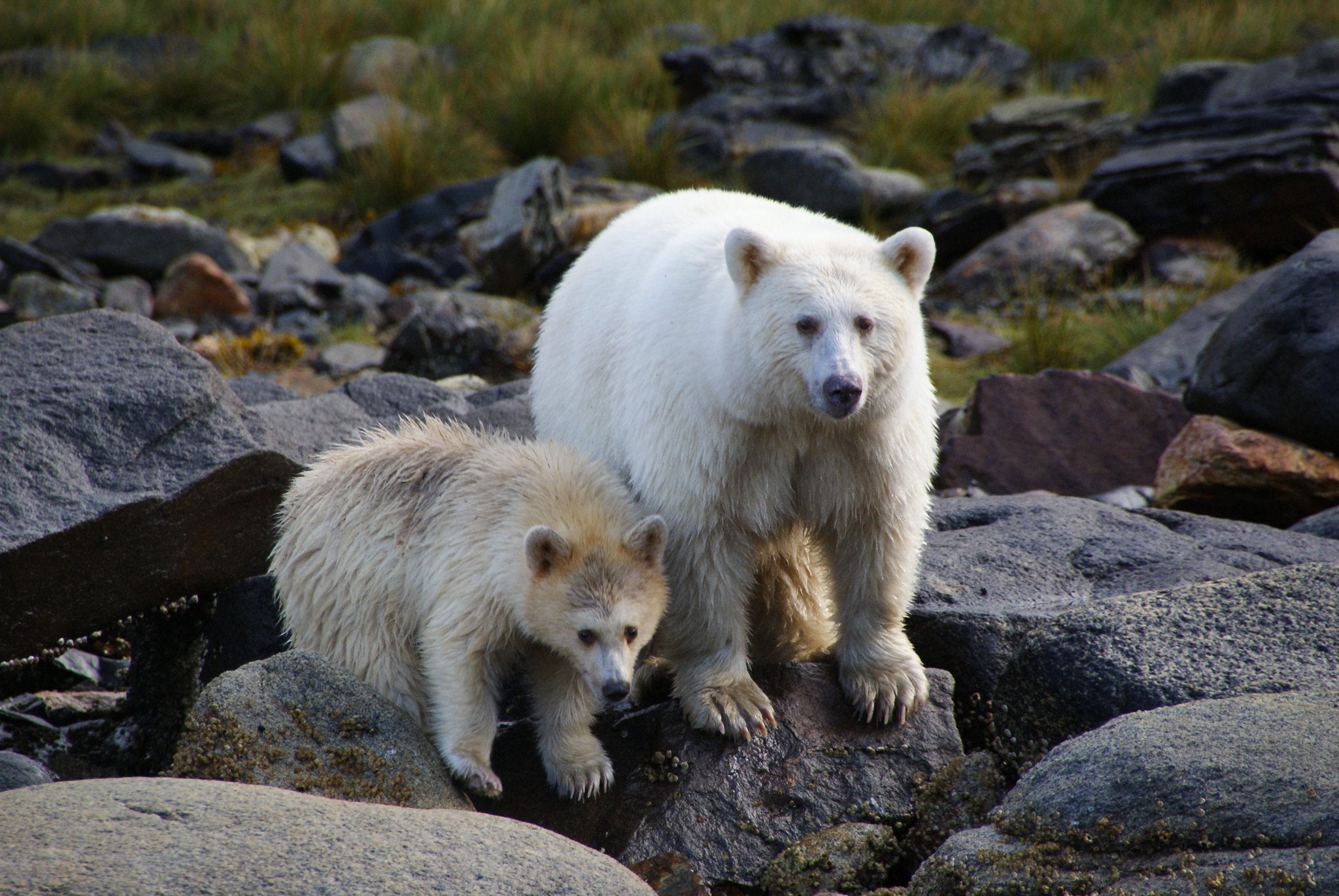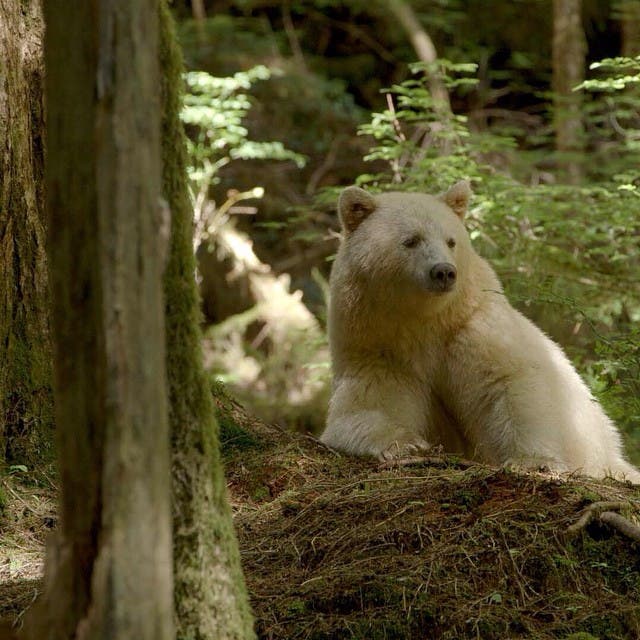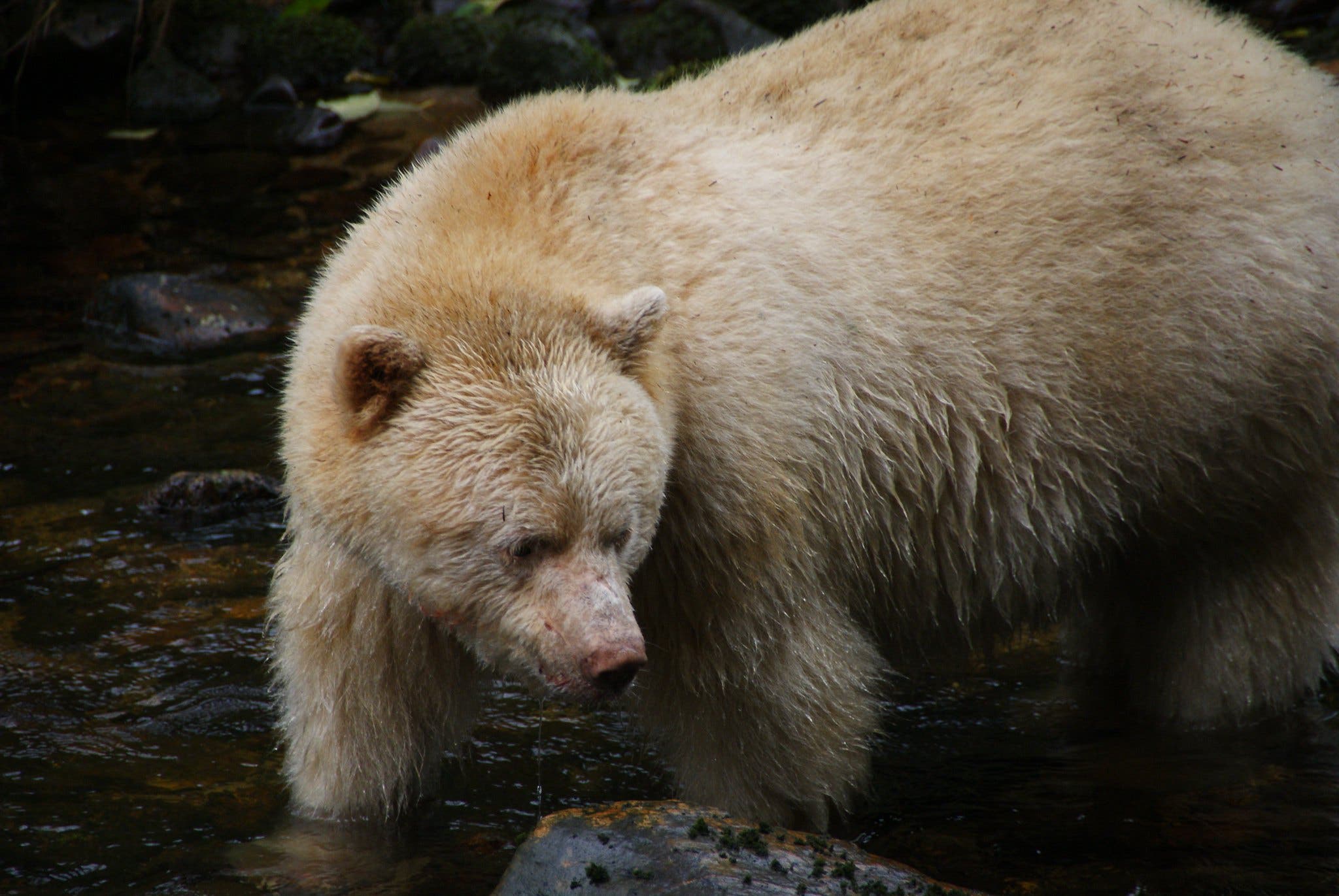Spirit Bears Capture Hikers' Imagination—But They May Be Getting Rarer

'Maximilian Helm'
The bear cub was white—not albino, but snowy with black eyes, thanks to a recessive gene that it’s mother, a normal black bear who it followed around, must have carried. Over a series of summers, Philip Charles and other guides at the Spirit Bear Lodge in British Columbia watched it grow up on camera traps.
By the next year, the cub, still just the size of a big dog, was on its own. Bigger bears chased it from food sources like the river running with salmon. Even when it got close enough, Charles recalls, the cub sat staring at the fish, visibly confused about what to do next. He and his colleagues worried whether it would survive. But the cub scrounged scraps that washed downstream and emerged over following years as one of the bigger, more dominant bears on the river.
“Just following that bear’s story—not many people have the opportunity to do that,” Charles says.
White bears like this cub, known as spirit bears or Kermode bears, live only in the Great Bear Rainforest on British Columbia’s coastline. An eco-tourism industry has arisen around spotting the creatures, often found clawing salmon from the streams in August and September. But while sightings have always been rare, some accounts suggest they’re getting even rarer: Spirit bears may now number at just a couple hundred, down from estimates that ran as high as 400 to 1,000 in earlier years. The local salmon population has decreased, affected by fish farms, commercial fishing, and climate change, and as it goes with the salmon, so it goes with bears.
“We’re lucky to see 10 different spirit bears in a whole season, and we’re out every day,” says Charles, who wrote a chapter in the recently published book The Bear: Culture, Nature and Heritage, on how scarce sightings of spirit bears have become in the 21 century.

In recent years, Kermode bears have become increasingly difficult to find.
He’s witnessed changes just in the decade he’s been visiting the area. In 2011, Charles was a recent college graduate looking for wildlife research projects when a professor invited him to document grizzly dispersals onto British Columbia’s islands. What he found in the First Nations village of Klemtu (population 350), has kept him coming back, first as a researcher, then as a youth program organizer and guide through the Spirit Bear Lodge.
“It was just an incredible place … to live and work on the absolute forefront of conservation,” he says. “The research program was high-level science, but a lot of the initiatives and actions are just boots on the ground—that sort of critical conservation.”
It’s hard to picture a more idyllic place than the Great Bear to study wildlife. Sightings of humpbacked whales and bald eagles, as well as bears, punctuated Charles’ work. In 2012, he helped launch a local chapter of the Supporting Emerging Aboriginal Stewards (SEAS) initiative, which takes tribal youth out to study and connect with the landscape. Spirit bears live in Kitasoo and Xai’xais territory and are sacred to the First Nations and wrapped in legend. They’re the subject of songs, dances, and stories, including one that says when Raven created the world, he made one in 10 black bears white to remind people of the Ice Age and the gratitude they should feel for this era’s abundance. They have also served as a symbol for campaigns to protect the Great Bear Rainforest from logging, hunting, and oil pipelines, like the Enbridge Northern Gateway.
But while spirit bears stand out to the people living among them, to science, they’re indistinguishable from black bears. The same gene that makes some humans redheads and some Labrador retrievers yellow changes their color. Other than that, they’re just normal black bears. They don’t appear to suffer any consequences from their pigmentation; in fact, one targeted study reported spirit bears actually catch more salmon than their dark counterparts, which could stem from salmon failing to recognize their light color against the sky. There’s no official population count. Some estimates run as high as 400. Based on seven-years of research in the Klemtu area, the local population is estimated at 100 to 125, and perhaps twice that many more live farther up the coast.

Spirit, or Kermode, bears, gain their unusual coloring from a recessive gene.
“But that would just be a good guess,” says John Lapp, a guide and operations manager for the Spirit Bear Lodge, which is owned by the Klemtu community and hires more than 90 percent of its staff from the village. In part, bears’ seasonal variations and tendency to appear where the food is makes them tough to count. He estimates last year, guides saw seven individual white bears, recognized by where they like to fish as well as by distinct scars. Much of his time with guests, about half of whom will see a white bear, is spent explaining the pressures bears face and how to better protect them.
“Global issues are impacting this remote area,” Lapp says.
A few factors come into play. Hunting spirit bears has been banned for decades and enforced with a $100,000 fine, but they were once targeted for their unique coats. Black bears carrying the recessive gene have almost certainly been lost to hunting, though nearby trophy hunts have finally ended, Lapp says. Grizzlies can crowd black bears from food sources. Climate change has made for longer, hotter summers and less rainfall, creating tough conditions in streams where salmon spawn. But it may be a key food source that’s most driving the change.
“The elders say the rivers used to be black with fish—you couldn’t walk across a stream without standing on salmon,” Charles says. “And it’s just not like that anymore and it continues to decline.”
Salmon have been hit by overfishing and fish farms, lost habitat or access to it through dams and logging operations, and climate change. Fish farms, where fish are raised in net pens suspended in the open water, are a major employer in Klemtu, but research shows they’ve also brought with them some “quite horrendous” issues, Charles says, by discharging excrement, chemicals, and parasites that can reach wild salmon. Research has found reduced survival among wild salmon running alongside increased farmed salmon production.
Without this food source, bears suffer, and so do the more than 100 other species, including the trees themselves, that rely on salmon for nutrients. Fisheries and Oceans Canada forecast last fall’s sockeye salmon run in British Columbia’s longest river, the Fraser, at 4.7 million and instead saw just 628,000. Lapp is new to Klemtu, but has been watching bears for years, and says there are seasons when they go to places bears should be, and there are no bears because there’s no salmon.
“The more we can protect forests, and the more salmon we can get back into the rivers, that becomes a good news story for bears,” Lapp says.
Even living in their habitat, only about a third of people in Klemtu have seen a spirit bear. When he guides trips, Charles says, sometimes they sit for hours, or even days, before a sighting.
“Then you see one coming out of the forest or from down the river and it’s just magic,” Charles says. “A part of me wants to say it shouldn’t be any different than a black bear, but it just is.”